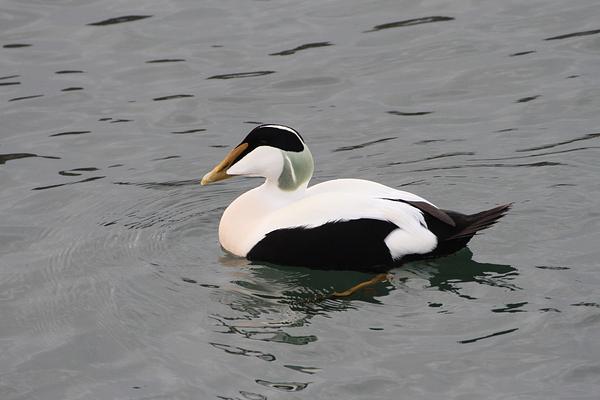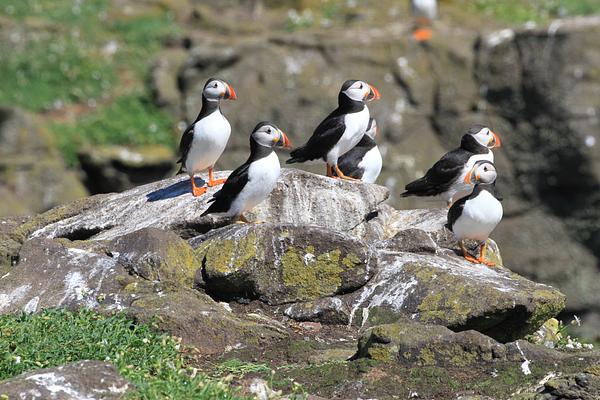.jpg)
Seasonal Wildlife
Our seasonal wildlife calendar highlights the incredible marine wildlife present in the Firth of Forth at different times of year.
January to April
Shags, eiders, gulls, cormorants and peregrines are present from the beginning of January and gannets arrive back towards the end of January, increasing steadily in number throughout February. Fulmars, razorbills and guillemots on nest sites if the weather is good and shags and peregrines displaying. Winter shorebirds such as turnstones, knot, redshanks and purple sandpiper are all present throughout the first quarter of the year, feeding among the rocks, mud, and sand for worms, molluscs and small crustaceans.
_Jamie_McDermaid-2.jpg)
Into March, eiders, gulls, cormorants, fulmars, razorbills and guillemots more often on nest sites and displaying. Shags and cormorants start to lay eggs and gannets fully established on nest sites by the end of the month. Peregrine lay eggs at the end of the month and become more secretive over the next few months.

During April, puffins return in large numbers and begin to nest. As the month progresses gannets, razorbills, guillemots, eiders, shags, cormorants and gulls lay eggs. The first shag chicks appear by the end of the month. Sanderlings, knot, purple sandpipers, turnstones, and redshanks are harder to see now, with most returning to their overseas breeding grounds by April. Some shorebirds travel as far away as the Arctic.
May to August

Around 500,000 seabirds are now present on the Forth islands, including over 110,000 puffins and the world's largest colony of Northern gannets. Kittiwakes and terns arrive back and begin nesting. Guillemots, razorbills, puffins, gannets, shags, cormorants, eiders, gulls and fulmars either on eggs or already have chicks. The last of the winter visitors depart northwards. June proves to be the best month to see seabirds, all feeding chicks at this time.
Come July, the breeding seasons comes to a close for all species except gannets and fulmars. Guillemots and razorbills have gone to sea by mid-July and puffins almost all gone by the end of the month. Gannet chicks are at the large, fluffy, white stage. Shag juveniles form groups with adults. Fulmar chicks appear and gull and tern chicks start to fledge.
By August, the first winter visitors, such as turnstones and redshanks, return. Gannet chicks change from white to dark juvenile plumage. Kittiwake juveniles form flocks along with adults, heading out to sea by mid-August and fulmar chicks have fledged by the end of August. Shags, eiders and gulls can be seen.
September to December
_Maggie_Sheddan_(4).jpg)
By September, many gannet chicks are fully fledged and start to leave for Africa. Winter visitor numbers increase and eiders, shags, cormorants, gulls and peregrines are present.
Most gannets leave the Bass by the end of October and head south to Africa. Winter visitors such as knot, sanderlings, redshanks, purple sandpipers and turnstones increase in number. These shorebirds return to the UK from their overseas breeding grounds, some travelling from as far North as the Arctic. Grey seal numbers start to build on the Isle of May for the breeding season, and pups are born from mid-October.
During November, grey seals start to pup on Craigleith. On the Isle of May, grey seal numbers peak at about 3,000, with pups born most days. The pups born in October moult and are weaned. Come December, the first fulmars return after 3 months at sea. The grey seal numbers dwindle although a few adults and pups remain on the islands until late December. Wintering shorebird numbers peak as all have now left their colder breeding grounds.
_Jamie_McDermaid.jpg)
